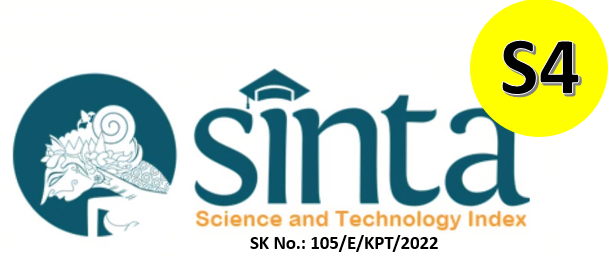Remediasi Tanah Tercemar Timbal di Lokasi Pertambangan Emas Selogiri, Wonogiri dengan Menggunakan Tuf Zeolitik
DOI:
https://doi.org/10.29080/alard.v9i1.1780Keywords:
Remediasi, Tanah, Pb, Tuf zeolitikAbstract
Soil contamination was commonly found in gold mining location in Selogiri, Wonogiri, and Central Java and need serious attention for remediation action. This study aimed to investigate the mineralogical characteristic of zeolitic tuff and to analyze the influence of its characteristic for lead sorption on soil in mining, as mentioned earlier location. The soil sample was obtained from around the gold mining location. The zeolitic tuff was obtained in two locations in Gunungkidul, Yogyakarta: A and B. Zeolitic tuff samples were then characterized for mineralogy content using polarization microscopes, cation exchange capacity (CEC) by using barium chloride method and XRD (X-Ray Diffraction) analysis. A batch test was conducted on a laboratory scale by shaking zeolitic tuff samples with soil samples in a CaCl2 solution. The solution was then shaken using a magnetic stirrer, and the filtrate was sampled at a specific time interval. The batch test result showed that the zeolite mineral percentage influenced the sorption behavior of zeolitic tuff in the sample and the value of CEC, which the more zeolite mineral and CEC value, the higher of sorption capacity achieved up to 58.8%. Hence, zeolitic tuff investigated in this study has a promising material for the remediation of Pb-contaminated soil in Selogiri, Wonogiri, and Central Java.
Downloads
References
Aida, LN, (2020), Karakteristik Tuf Zeolitik Daerah Tegalrejo, Gunungkidul Dan Efektivitasnya Terhadap Remediasi Tanah Tercemar Timbal, Skripsi, tidak dipublikasikan, Departemen Teknik Geologi Universitas Gadjah Mada.
Ali, A., Chiang, Y. W., & Santos, R. M. (2022). X-ray diffraction techniques for mineral characterization: A review for engineers of the fundamentals, applications, and research directions. Minerals, 12(2), 205.
Ardiana A, Budianta W, Warmada IW (2019) Remediasi Cd dengan menggunakan tufa zeolitik Tegalrejo, Gunungkidul, Yogyakarta, Prodising Seminar Nasional Ilmu Kebumian 2019, Departemen Teknik Geologi Universitas Gadjah Mada.
Aspinall, C. (2001) Small-scale mining in Indonesia. International Institute for Environment and Development, Mining Minerals and Sustainable Development Report, Jakarta.
Babak K, Rahim AA, Wahid SA, Balasundram SK, Afyuni M (2013) Sorption and desorption of zinc by clinoptilolite and clinoptilolite-tridymite. Malaysia Journal Soil Sciences, 17:69–83.
Budianta, W., Andriyani, N.D., Ardiana, A., Warmada, I.W., 2020, Adsorption of Lead and Cadmium from Aqueous Solution by Gunungkidul Zeolitic Tuff, Indonesia, Journal Environmental Earth Sciences, 79:172.
Filippidis A, Kantiranis N, Stamatakis M, Drakoulis A, Tzamos E (2007) The cation exchange capacity of the Greek zeolitic rocks. Bulletin Geological Society Greece 40(2):723–735.
Hendershot, W. H., dan Duquette, M. (1986). A simple barium chloride method for determining cation exchange capacity and exchangeable cations. Soil Science Society of America Journal, 50(3), 605-608.
Htun, T.M., Warmada, I. W., Harijoko, A., Saputra, R., (2006), Arsenic and Heavy Metals Contamination in Small Scale Mining, Selogiri Area, Wonogiri Regency, Central Java, Indonesia: Yogyakarta, Proceedings of 9th International Symposium on Mineral Exploration, ITB Bandung (h.69 – 75).
Machiels, L., Morante, F., Snelling, R., Calvo, B., Canoira, L., Paredes, C., Elsen, J. (2008), Zeolite mineralogy of the Cayo formation in Guayaquil, Ecuador. Journal Applied Clay Science, 42: 180-188.
Moor, C., Lymberopoulou, T., & Dietrich, V. J. (2001). Determination of heavy metals in soils, sediments and geological materials by ICP-AES and ICP-MS. Microchimica Acta, 136, 123-128.
Mubarak, M. F., Mohamed, A. M. G., Keshawy, M., Abd elMoghny, T., & Shehata, N. (2022). Adsorption of heavy metals and hardness ions from groundwater onto modified zeolite: Batch and column studies. Alexandria Engineering Journal, 61(6), 4189-4207.
Popaliya, M., & Mishra, A. (2022). Modified zeolite as an adsorbent for dyes, drugs, and heavy metal removal: A review. International Journal of Environmental Science and Technology, 1-18.
Ugwu, E. I., Othmani, A., & Nnaji, C. C. (2022). A review on zeolites as cost-effective adsorbents for removal of heavy metals from aqueous environment. International Journal of Environmental Science and Technology, 19(8), 8061-8084.
Velarde, L., Nabavi, M. S., Escalera, E., Antti, M. L., & Akhtar, F. (2023). Adsorption of heavy metals on natural zeolites: A review. Chemosphere, 138508.
Widhiyatna, D., Hutamadi, R., Ahdiat, A., (2006) Proc. Pemaparan Hasil-Hasil Kegiatan Lapangan Dan Non Lapangan Tahun 2006, Pusat Sumberdaya Geologi. Bandung.
Zou, W., Han, R., Chen, Z., Jinghua, Z., & Shi, J. (2006). Kinetic study of adsorption of Cu (II) and Pb (II) from aqueous solutions using manganese oxide coated zeolite in batch mode. Colloids and Surfaces A: Physicochemical and Engineering Aspects, 279(1-3), 238-246.
Published
How to Cite
Issue
Section
License
Copyright (c) 2023 This is an Open Access article distributed under the terms of the Creative Commons Attribution 4.0 International License, which permits unrestricted use, distribution, adaptation, and reproduction in any medium, provided that the original work is properly cited.

This work is licensed under a Creative Commons Attribution-ShareAlike 4.0 International License.
Authors who publish with this journal agree to the following terms:
- Authors retain copyright and grant the journal right of first publication with the work simultaneously licensed under a Creative Commons Attribution License that allows others to share the work with an acknowledgement of the work's authorship and initial publication in this journal.
- Authors are able to enter into separate, additional contractual arrangements for the non-exclusive distribution of the journal's published version of the work (e.g., post it to an institutional repository or publish it in a book), with an acknowledgement of its initial publication in this journal.
- Authors are permitted and encouraged to post their work online (e.g., in institutional repositories or on their website) prior to and during the submission process, as it can lead to productive exchanges, as well as earlier and greater citation of published work.



